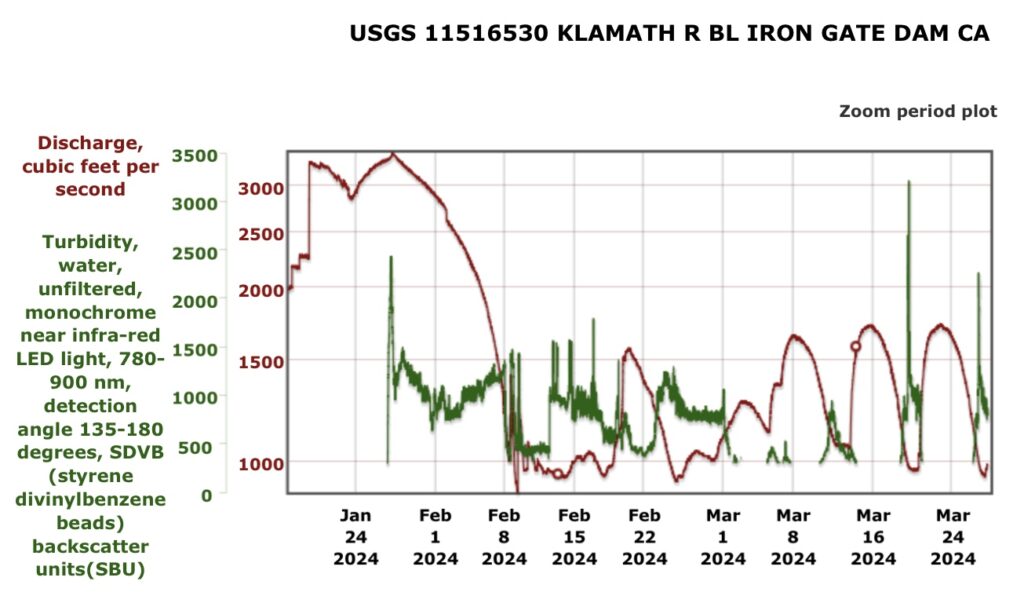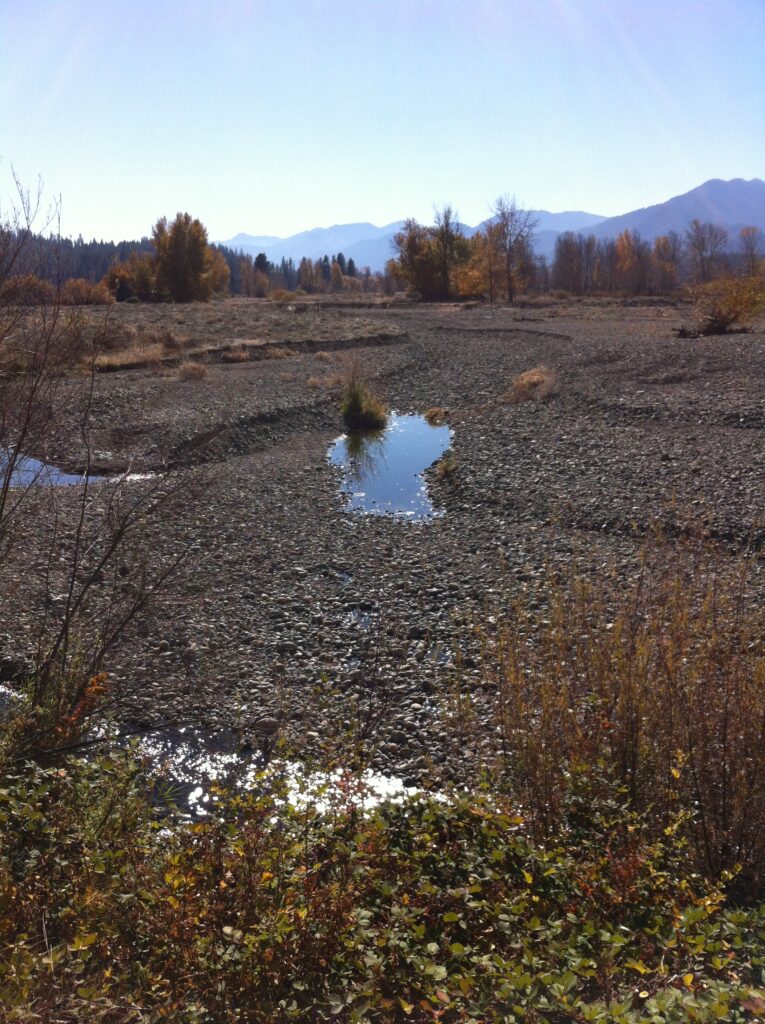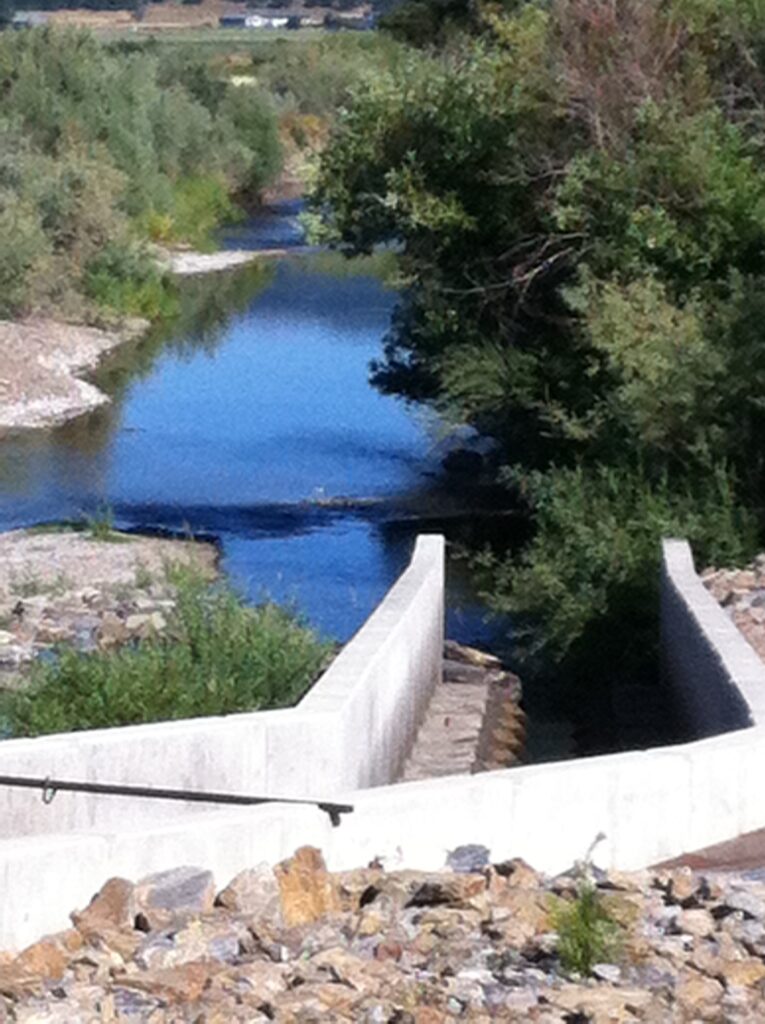October has just ended, and the spawning of spring-run Chinook salmon should be nearing completion. The winter-run have already finished spawning, and their eggs are now hatching. The fall-run salmon are in the rivers and beginning their spawning on the Hunter’s Moon. The fall-run are often neglected after the two endangered runs are complete. There are actions needed now to protect this biggest and most important run. After all, the California Fish and Game Commission sacrificed the commercial and sport salmon fishing this year to let the fall-run recover from record lows.
The first signs of trouble in 2023 came with the the low number of returning Central Valley spring-run Chinook Salmon this year. The decline was indicative of a sudden drastic collapse in all the salmon runs around the Central Valley.
In the northern Sacramento Valley, there are the Clear Creek and Battle Creek spring-run populations. In the middle Sacramento Valley, there are the Mill and Deer Creeks populations with their remnant counterparts in nearby Big Chico and Antelope Creeks. There is also the relatively robust (until 2023) Butte Creek population. Then there is the Feather-Yuba population in the lower Sacramento Valley. Finally, there is the new population being restored in the upper San Joaquin River near Fresno. An October 11, 2023 joint news release from NMFS and CDFW describes the numbers of returning spring-run this year as drastically low, to the point that fishery agencies have begun capturing the wild yearlings still residing in the spawning creeks and transporting them to a UC Davis conservation hatchery to preserve the species.
An immediate need is to focus attention on the fall-run Chinook that normally pour into the rivers and begin spawning with the Hunter’s Moon. Water year 2023 was a wet year, and salmon fishing has been closed in anticipation of predicted low numbers in this year’s spawning run. It turns out drought years 2021 and 2022 had worse-than-predicted effects on the Valley salmon.
The news release from NMFS and CDFW says, “While other year-classes (or cohorts) will return in coming years, the 2019-2022 drought impacted multiple cohorts, increasing risks for extirpation.” Actually, 2019 was a wet year and 2020 was a below-normal water year. It is brood-years 2020, 2021, 2022, and now 2023, that the 2021-2022 drought damaged from many different directions. Looking ahead, there is a bad forecast for the coming years. Poor brood years 2020-2023 will lead to poor brood years in 2024-2027, and so on, unless we pay attention now to this year’s fall run.
The Actions Needed Now – Starting the First of November:
1. An intensive monitoring program to assess the damage.
2. Remaining wild and hatchery salmon need maximum protection – this includes a temporary conservation hatchery.
3. This year’s production, no matter how minuscule, must be protected. A substantial portion of the juveniles should be rescued and preserved. If water year 2024 turns dry this winter, fry, fingerling, and pre-smolt salmon from all races should be captured and eventually transported to the Bay unless significant strategic, coordinated flow pulses can be provided or occur naturally.
4. All hatchery smolts should have at least an adipose fin-clip mark. As many as possible should be released to the Bay or coast for maximum survival. The marks will be important to differentiate between hatchery and natural-born salmon in the coming years.
5. At locations where migrating adult spring-run salmon potentially originating from Clear, Battle, Mill, Deer, and Butte creeks are clearly stuck or off-course during fall-winter-spring of water year 2024, and where it is possible to collect them, fish agencies should attempt to capture them and return them to their natal stream or to the conservation hatchery. Locations include weirs, dams, ladders, or traps, as well as hatcheries. This will require Genetic Stock Identification (GSI).
6. Juvenile salmon salvaged at south Delta export facilities this winter and spring should be handled as follows: pre-smolt and smolt salmon should be transported to Golden Gate pens for release. Salvaged fry and fingerlings should be hatchery reared or pen reared to smolt size for eventual pen release at the Golden Gate.
7. The fish agencies and water managers must provide prescribed streamflows and water temperatures in spawning streams and in rearing and migratory reaches. They should not even consider Temporary Urgency Change Petitions for water supply. Given the current storage in reservoirs across the state, they should prioritize fall and winter flows for salmon over reservoir storage.
8. Fall-run salmon hatcheries will be short of eggs this year. Some hatcheries may need to ship eggs to other hatcheries. The American River Fish Hatchery in the past sorted adult strays from the Coleman Hatchery on Battle Creek and transported their eggs back to Coleman.
9. Hatcheries should increase the proportion of smolt production trucked to the Bay or coast, where survival rates are up to ten times higher than river releases.
Site-Specific Actions:
10. Yuba River – In the lower Yuba River downstream from Englebright Dam to Marysville streamflow should be immediately increased for spawning and incubation. Target minimum streamflow should be at least 700 cfs from Englebright Dam to Marysville gage – through spring.

Figure 1. New Bullards Bar Reservoir has never been fuller at this time of year.
11. American River – Water temperatures should be lowered to 55oF to protect spawning salmon in this fall’s spawning season. This will require greater power bypass releases from the reservoir as begun in mid-October (Figure 2). Folsom Reservoir is also “full.”
12. Upper Sacramento River – Streamflow should be maintained at a minimum of 7000 cfs (Figure 3) through the fall-winter-spring at Bend Bridge gage to provide good spawning, rearing, and emigrating conditions for salmon. Shasta Reservoir is also “full.”
13. Deer and Mill creeks – Streamflow from February through May should be maintained at a minimum of 100 cfs or higher to provide a clear migration corridor with water temperatures in the optimal range. Diversions should be disallowed when flows drop below 100 cfs in these months.
14. Butte Creek – Streamflow from February through May should be maintained to conform with the recommendations in the 2017 Draft Instream Flow Regime Recommendations Butte Creek.
15. Lower river migration corridors to and through the Delta – Water temperatures in winter and spring should be maintained below 60-65oF (see Figure 4), the lower the better. Striped bass still eat a lot of salmon at 65o
In conclusion, it is time for action.

Figure 2. Water temperature in the lower American River at Watt Ave gage in September-October 2023 and 6-year average. Water temperatures need to be 55F by November 1. They should have been no higher than 60F in October.

Figure 3. Streamflow in the upper Sacramento River at Bend Bridge gage in September-October 2023 and 59-year average. Flows should be maintained near 7000 cfs through the fall.

Figure 4. Water temperatures in spawning areas should be below 55oF, while rearing and migration corridors should be below 60oF through spring. Spawning reaches include Feather River at Gridley (GRL), Sacramento River from Keswick Dam (KWK) to Bend (BND), Stanislaus River at Ripon (RPN), American River at Watt Bridge (AWB), and Clear Creek at IGO (IGO). Migration and rearing corridors include lower San Joaquin River at Mossdale (MSD), upper Sacramento River at Red Bluff (RDB), lower Sacramento River at Wilkins Slough (WLK) and Freeport (FPT). Blue dotted line is spawning temperature limit. Red dotted line is rearing and migration limit.





































